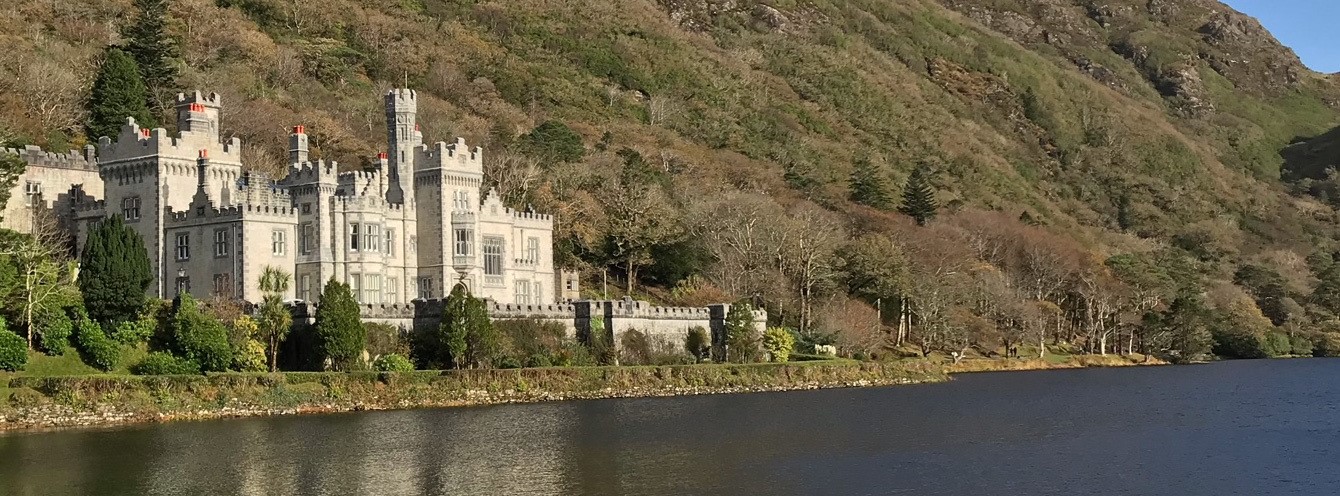94% Believe in the Importance of Built Heritage in Ireland for Future Generations

More than nine in ten (94%) agree that it is essential for future generations to have access to Ireland’s built heritage sites, and 63% believe that local communities should assume a leading role in their preservation, according to new research by Ecclesiastical Insurance.
This nationally representative study conducted by 3Gem*, was commissioned to mark National Heritage Week (August 17 – August 25, 2024). The survey analysed the perceptions of Built Heritage sites in Ireland by those living here; it revealed that fourth fifths (84%) of people believe that it is very important to preserve Built Heritage in Ireland - which is defined by the Heritage Council as historical sites, buildings, monuments, installations or remains, which are associated with architectural, cultural, social, political, economic or military history. The results of this survey demonstrated that Irish people are interested in the promotion of Built Heritage, its conservation and the role it plays in the community.
Public Perceptions, Challenges and Solutions
The majority (80%) view these sites as major tourist attractions, indicating that people in Ireland recognise their cultural and economic importance. The survey shows that 62% are motivated to visit heritage sites due to an interest in history and culture, while 37% are driven by a sense of local or national pride.
The survey also highlights pressing challenges and barriers for the conservation of monumental sites and areas of cultural or historical importance. According to the respondents, the main challenges are maintenance and upkeep costs (65%), a lack of funding for conservation efforts from public and private entities (60%) and threats from development and urbanisation (40%).
Over half of Irish people (54%) believe that engaging local artists and designers in restoration projects is a possible solution for the promotion and preservation of Built Heritage, and another 51% would incorporate modern technology for monitoring and maintenance.
When asked what motivates people to visit heritage locations, 42% of people in Ireland visit heritage sites or buildings at least two to four times a year for leisure or educational purposes. 25% visit them more than five times a year and only 5% indicate that they had never attended a heritage.
Regional and Generational Insights
Regional insights show a variation in attitudes towards heritage preservation. Munster-based respondents are particularly focused on involving local artists in restoration projects (58%), and people in Connacht (53%) would use sustainable materials and practices to help preserve Ireland's built heritage for future generations.
Participants also believe that heritage sites foster a sense of belonging and shared identity - the sentiment for those living in Munster (55%) is higher compared to those based in Leinster (52%), Connacht (49%) and Ulster (48%).
78% of people in Leinster believe that Built Heritage serves as a major attraction for tourists; for those in Munster (85%), Connacht (79%) and Ulster (80%), there is a slightly more positive attitude towards Built Heritage in terms of its role as a major tourist attraction.
The survey reveals some generational differences in attitudes toward Built Heritage. While 96% of Millennials (ages 25-35) view the preservation of Built Heritage as very important, this is slightly lower among younger respondents (ages 18-24), with 93% believing in its importance. Regarding visits to heritage sites, 29% of the 25-35 age group cite a strong interest in history and culture as their primary motivation, compared to 51% among Gen Z (ages 18-24) participants. Additionally, 37% of those aged 25-35 visit heritage sites due to a sense of local or national pride, whereas only 28% of 18-24-year-olds share this sentiment.
Popular and Lesser-known Sites
The survey also highlights the disparity between popular and lesser-visited heritage sites. Among the sites frequently visited, Trinity College Dublin leads with 68% of respondents having been there, followed by Bunratty Castle and Folk Park in County Clare at 53%, and Glendalough Monastery in Wicklow (51%). Conversely, notable sites that many have yet to experience include: Skellig Michael in County Kerry (73%), Brú na Bóinne in County Meath (72%), Hook Lighthouse in County Wexford (68%), and Kylemore Abbey in County Galway (62%). National Heritage Week is an excellent opportunity for people to visit various sites around the country- with many exciting events taking place at these iconic landmarks.
David Lane, Managing Director for Ecclesiastical Insurance Ireland, said: “Ecclesiastical Insurance is Ireland’s leading specialist insurer in the heritage sector and research like this gives great insight into the views of the nation and highlights why we are continuing to protect these sites.
“Interestingly, only 9% of those surveyed believe that modern buildings offer better functionality and amenities than heritage sites. Across all generations, the charm and character of Built Heritage are consistently valued as key factors. This is evident in the high attendance rates at renowned sites such as Trinity College Dublin, Bunratty Castle and Folk Park in County Clare. However, many significant sites, like Brú na Bóinne in County Meath and Hook Lighthouse in County Wexford, remain less visited.
Our data highlights both the widespread appreciation for popular heritage sites and the potential for increased awareness and visitation to these lesser-known locations. Ecclesiastical Insurance is proud to uphold its commitment to protecting and celebrating Ireland’s exceptional heritage. We encourage everyone to take part in National Heritage Week (August 17 – August 25, 2024) events and explore the many marvellous sites across the island.”
58% of respondents nationwide believe that Built Heritage sites are crucial to Ireland’s tourism industry and promoting local economies. Additionally, 56% feel these sites help preserve traditions, and just over half believe they foster a sense of belonging and shared identity. Through Ecclesiastical Insurance’s efforts, partnerships, and the work of key organisations like The Office of Public Works, Heritage Ireland, Irish Georgian Society, and Landmark Trust, Built Heritage can be preserved and protected for future generations.
To learn more about Ecclesiastical and how they can help with your Heritage insurance requirements visit: www.ecclesiastical.ie
